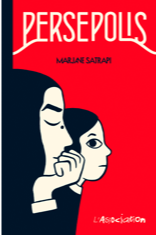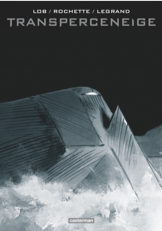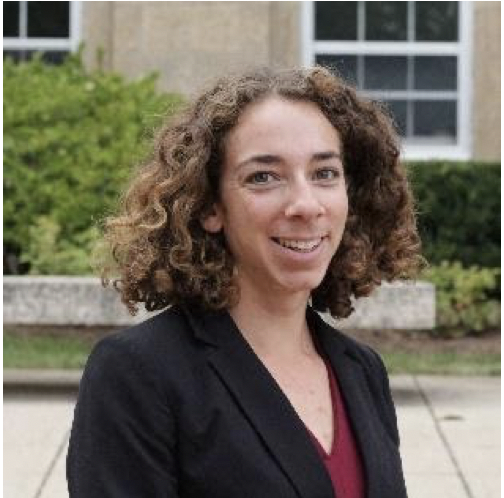By Sarah Forzley
In a small, rural, private high school, I have the privilege (among many others) of teaching French to the same students from sophomore through senior year. Each year, I can reconsider my curriculum based on the unique makeup of each class. This year’s class of seniors has always liked literature: after reading a few chapters of L’Odeur du café (Dany Laferrière) and Comment peut-on être français? (Chahdortt Djavann), they asked last year if we could move up to the major leagues: completing an entire book.
 Knowing that I can only assign 30 minutes of homework a couple days a week (my students don’t yet read very fast), and reading comprehension gaps widen over with the length of the text, I turned to graphic novels. I expected that graphic novels would address both comprehension and reading fluency challenges, because the visual text does not rely on linguistic ability and it serves as a support to comprehend the written text. So, last fall we tackled Persépolis vol. 1-4 (Marjane Satrapi, L’Association 2003), which follows the author from childhood in Iran to adolescence in Austria, to early adulthood in France. This fall, we’ve switched to science fiction, reading Le Transperceneige vol. 1 (Jacques Lob & Jean-Marc Rochette, Casterman 1984), which imagines the world’s survivors of a nuclear winter living on a train that can’t stop moving.
Knowing that I can only assign 30 minutes of homework a couple days a week (my students don’t yet read very fast), and reading comprehension gaps widen over with the length of the text, I turned to graphic novels. I expected that graphic novels would address both comprehension and reading fluency challenges, because the visual text does not rely on linguistic ability and it serves as a support to comprehend the written text. So, last fall we tackled Persépolis vol. 1-4 (Marjane Satrapi, L’Association 2003), which follows the author from childhood in Iran to adolescence in Austria, to early adulthood in France. This fall, we’ve switched to science fiction, reading Le Transperceneige vol. 1 (Jacques Lob & Jean-Marc Rochette, Casterman 1984), which imagines the world’s survivors of a nuclear winter living on a train that can’t stop moving.
 Now that I’m more than halfway through my graphic novel experiment, I’m reflecting back on the standards I created for my reading/writing assessments, especially this one: “I can analyze/create a complex text that has multiple layers of meaning, showing comprehension of language and content. My response/text analyzes the cause and effects of geopolitical relationships.” Is this standard reasonable? Can we both contextualize graphic novels and model their analysis effectively enough to guide high schoolers to connect big ideas to these books so that they reveal lessons about social, political, and economic situations today? I’m on a mission to find out. Here are my notes from the field.
Now that I’m more than halfway through my graphic novel experiment, I’m reflecting back on the standards I created for my reading/writing assessments, especially this one: “I can analyze/create a complex text that has multiple layers of meaning, showing comprehension of language and content. My response/text analyzes the cause and effects of geopolitical relationships.” Is this standard reasonable? Can we both contextualize graphic novels and model their analysis effectively enough to guide high schoolers to connect big ideas to these books so that they reveal lessons about social, political, and economic situations today? I’m on a mission to find out. Here are my notes from the field.
Contextualization
I’m still searching for the balance between how much I ask the students to do themselves and how much I provide to them. With Persépolis, I assigned each student to individual research, including interviews with Satrapi, linguistic and political maps of the region, and articles on the Iran-Iraq war. This empowered students to speak up as the class “expert” on a topic whenever we needed to contextualize events in Persépolis, but putting students totally in charge of contextualization meant that I didn’t quite get everyone on the same page. About 90% of my students achieved the aforementioned standard in reading, and only 75% met the standard in writing. With Le Transperceneige, I’ve taken on more of the contextualization, but once I put myself in charge, the inner researcher in me just can’t stop. It’s overwhelming!
For instance, I’d love to explain the trope of illness in Le Transperceneige in the context of French colonialism. I fear, though, that introducing medical anthropology in colonial Africa and the lasting effects today will create confusion about a topic that I don’t have time to explain adequately. However, COVID-19’s unequal effects on BIPOC people in the United States has rendered more accessible the discussions of illness in Le Transperceneige for this class. Current news about how discriminatory systems have created gaps in health care, housing, finance, and occupation that led to BIPOC people carrying a disproportionate burden of this pandemic are a much easier secondary text for high schoolers than Nancy Rose Hunt or Steven Feierman, and they open the door to narratives about who gets ill, why, and how. We’re still missing the direct connection to French colonialism and the giant historical step back, but when I do finally include that, I’m also going to keep the more contemporary connector I used this year since it’s part of my students’ lived experience.
Analysis
The images in Persépolis are simple and clean, which makes it easy for the reader to track both changes and repetition from one frame to the next. It’s really the perfect graphic novel for beginning image analysis! Modeling, explicit instruction, lots of directed practice, and independent practice of image analysis led to 100% of the students meeting the standard for image analysis in Persépolis. On the other hand, the busier images in Le Transperceneige impede visual analysis by a student still struggling to comprehend them. With scaffolding, though, the richness of detail provides more (visual) text for us to analyze.
Analysis of the written text went much more smoothly in Persépolis than it has so far in Le Transperceneige, primarily because comprehension was so much easier. Every night I offered a menu of comprehension and analysis questions from which students could choose, a model that I’d like to imitate the next time I teach Le Transperceneige. Comprehension dominated our Transperceneige discussions for the first half of the book, delaying guided practice in textual analysis. In the future, I’m going to institute five-minute journaling in response to an analytical prompt at the beginning or end of each class to offer low-stakes analysis practice throughout students’ journey toward comprehension.
Have you taught these works to high school students or as an introduction to literature in college? Have you found any framings, secondary readings, or activities that worked particularly well? Reply to this post – I’d love to exchange more ideas!
 Sarah Forzley teaches the upper levels of French at Sun Valley Community School. She received her PhD in French with a minor in Women’s & Gender Studies and African Cultural Studies from the University of Wisconsin-Madison. Her research interests include (post)colonial diasporic responses to the trauma of spatial constraint and popular imaginings of the nation amidst postcolonial deterritorialization. She has published articles on Malika Mokeddem (Chimères) and Yolande Mukagasana (TROPOS).
Sarah Forzley teaches the upper levels of French at Sun Valley Community School. She received her PhD in French with a minor in Women’s & Gender Studies and African Cultural Studies from the University of Wisconsin-Madison. Her research interests include (post)colonial diasporic responses to the trauma of spatial constraint and popular imaginings of the nation amidst postcolonial deterritorialization. She has published articles on Malika Mokeddem (Chimères) and Yolande Mukagasana (TROPOS).
